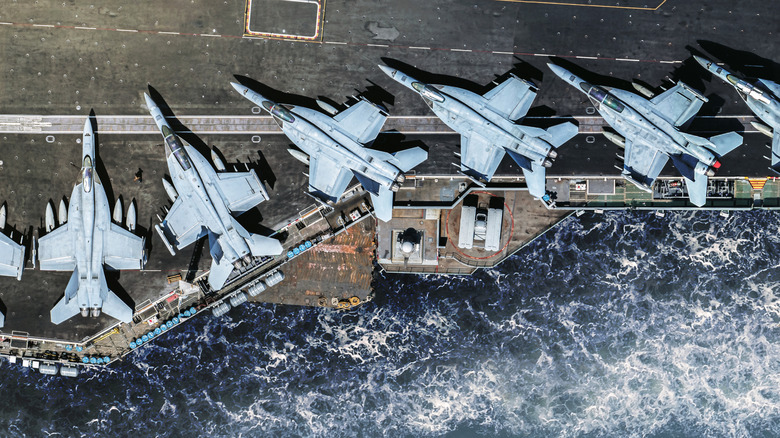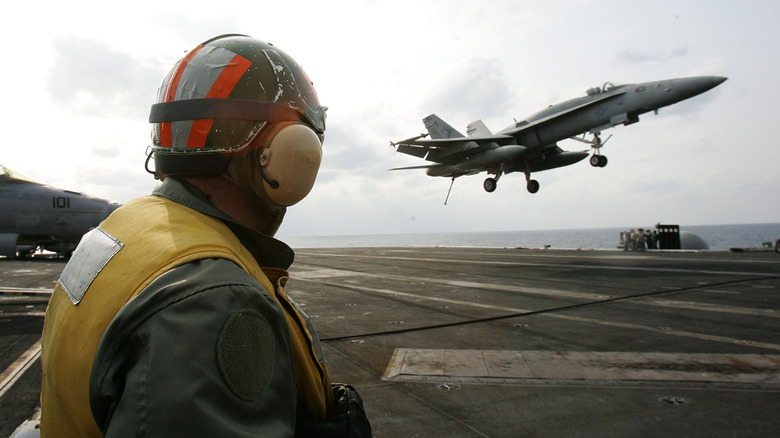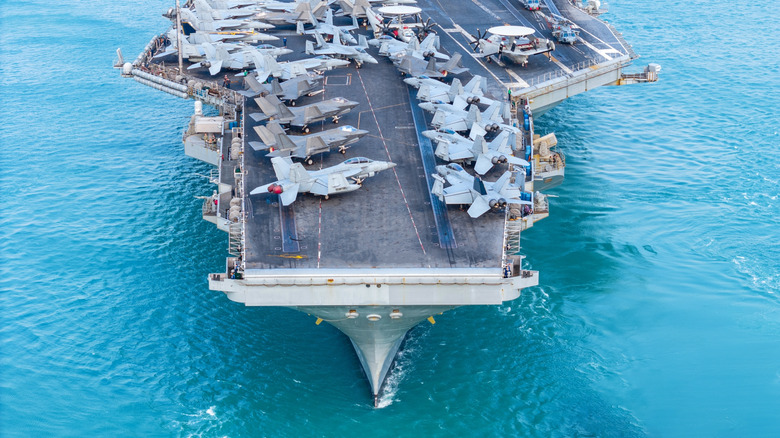How Many Fighter Jets Have Fallen Off Aircraft Carriers In 2025? (And Why)
Two fighter jets have fallen off U.S. Navy aircraft carriers in 2025 alone. One of these involved an F/A-18 Super Hornet from the USS Harry S. Truman. On the other hand, the other jet – also from the Truman — reportedly plunged into the Red Sea after the carrier's arresting equipment failed to bring the jet to a complete stop after landing. The aircraft's aviators successfully ejected and only sustained minor injuries. A third unconfirmed case occurred during operations in the Red Sea, likely connected to the ongoing conflict with Houthi forces.
While these numbers may seem small, let's not forget that each incident comes with a heavy price tag. Each of these jets costs around $60 million. Interestingly, none of these jets were lost during active combat missions. Instead, they were accidents that happened during standard deck operations.
Aircraft carriers operate in unpredictable environments. High seas, sudden ship maneuvers, or even simple equipment malfunctions can quickly turn routine movements into disasters. As a result, a single mistake, whether human error or equipment failure, can send these super-expensive military aircraft into the ocean in seconds.
Why do these incidents happen?
Weather has played a major role in at least one of the 2025 incidents. Rough seas and heavy swells can make even a massive ship like a carrier unstable. An F/A-18 reportedly fell overboard during such conditions in 2022. It's unknown if the tie-downs weren't properly secured or if someone failed to build pressure in the brakes. Tory Rich, a former Marine mechanic, told Business Insider that many of the tie-downs used are old and commonly break.
Other known causes include faulty towing equipment or catapult misfires. Sometimes, jets fall during takeoff preparations when forces on the deck are at their highest. Similarly, sudden evasive ship maneuvers to avoid threats can also shift aircraft unexpectedly if not properly secured.
Human error also remains a recurring factor. The aircraft that aren't secured properly and the miscommunications between pilots and deck crews are one such example. Simple miscalculations during tight maneuvers can also result in catastrophe. Fatigue and high-pressure conditions can lead to critical errors as well. For example, in 2025, an F/A-18 jet and its tow tractor slid off the USS Harry S. Truman while being moved inside the hangar bay.
USS Truman heads home as Navy prepares safety review
These incidents just give a prove of the strain placed on both equipment and personnel during the naval operations. However, the U.S. Navy has ramped up activity in high-risk zones like the Red Sea and Arabian Sea due to ongoing missile and drone threats. With that intensity of operations, there's little room for error. The constant movement, rapid deployments, and high-alert missions force crews to work long hours in intense conditions.
After months at sea, the USS Harry S. Truman is finally heading back to Norfolk. Now the Navy plans to take a hard look at everything that went wrong. This includes everything from equipment to how decisions were made during high-pressure moments. This review could lead to changes in training, safety checks, or even how carriers operate in tense zones. But challenges still remain as the jet sank.
Luckily the military personnel on the jet, as well as on the tractor, escaped safely. While officials often describe these events as "mishaps," the high cost — both financial and operational — has raised concern within the military.


